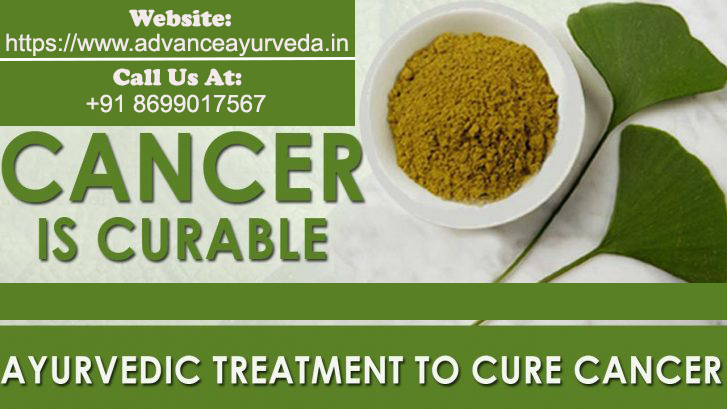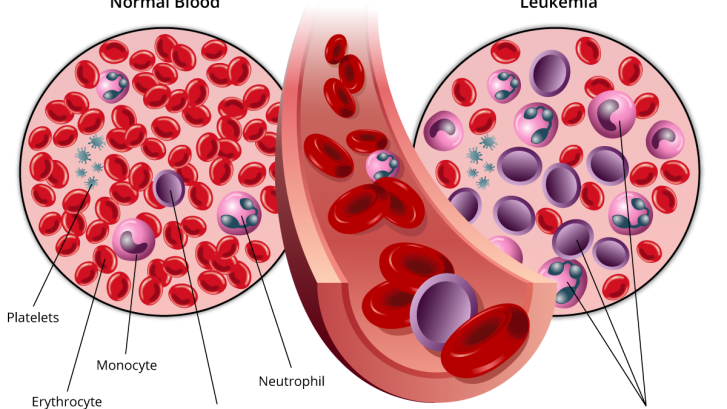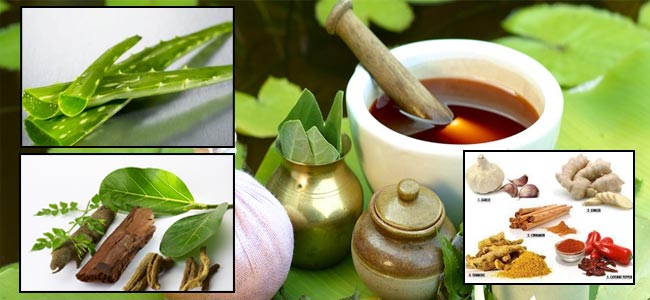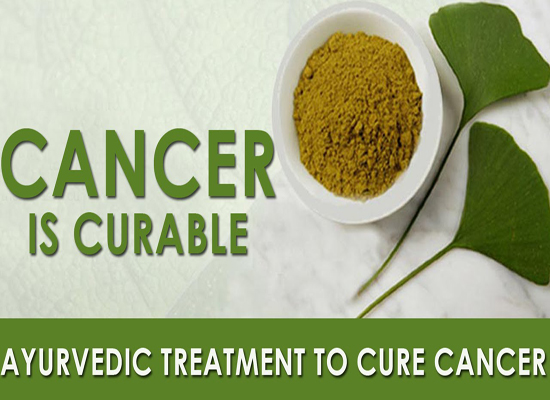Ayurveda is 5000-year-old science which is now researched in Modern science for its astonishing results in the treatment of various diseases. The herbs and Rasa Aushadis treat various disorders, they have a scientific base & science is trying to invent the same through evidence-based studies. Today’s era is governed by modern science which is still looking for an answer for dreaded diseases like cancer. In this blog, we will be talking about various herbs which are really helpful in preventing, palliative & curing cancer. Herbs have been always enriching human lives by their healing touch. We have heard a lot about the role of these herbs from our grandparents and forefathers. There are few herbs that can actually cure cancer as well.
There are a lot of herbs that play a crucial role in the treatment of cancer but we are hereby describing a few.
1. ASHWAGANDHA (Withania Somnifera)
Stress is the most important triggering factor in many types of Cancer. Ashwagandha, also known as Indian ginseng, helps to deal with stress. It possesses anti-cancerous properties which were discovered around 40 years ago when a researcher realized a crystalline steroidal compound (withaferin A) from Ashwagandha. Furthermore, research on leaf extracts of this herb is done which exhibited Anti- cancerous activity.
2. TURMERIC (Curcuma longa)
Turmeric is widely used in Indian kitchen in various recipes. Turmeric, also known as “Haldi”, is one of the highly researched herbs for its various health-related benefits & also for its anti-cancer properties. It is used as an antiseptic (paste applied on wounds), analgesic (used with milk) & anti-inflammatory
++(applied on swelled joints as a paste). In research, curcuminoids have been isolated from turmeric. Later-on ‘curcumin’ the active principle was isolated which was found to have free radical scavenging activity and also it inhibits the growth of cancerous cells. More than 2000 scientific papers have been published on turmeric which shows that curcumin has the ability to kill cancer cells while not harming the healthy cells.
3. HOLY BASIL- TULSI (Ocimum sanctum)
The impacts of basil are not constrained to its antimicrobial properties as proof shows that it additionally can bring down oxidative harm in animal models (Dasgupta, Rao, and Yadava 2004).
In a study tulsi vinegar–enriched extracts from several herbs (rosemary, sage, and basil) in soups and salads reduce oxidative stress and improve quality of life measures in women with stage IIIB and IV breast cancer.
The anticancer properties of basil in preclinical examinations are mixed. Research has shown that basil can diminish DMBA-prompted carcinogenesis.
People with hepatitis B are at a risk to develop hepatocellular carcinoma (Fung, Lai, and Yuen 2009; Ishikawa 2010). Chiang et al. (2005) assessed the antiviral activities of basil against a few infections, including hepatitis B. Astonishingly, he found that the fluid concentrate of basil showed more prominent results against hepatitis B medications( glycyrrhizin and lamivudine).
4. CARAWAY (Carum carvi)
Caraway surely understood as “meridian fennel” or “Persian cumin,” is found in South east-Asia, Europe, and North Africa. The active components in caraway oil are carvone and limonene. Caraway seems, by all accounts, to be a potent anti-oxidant. As of late, Kapoor et al. (2010) demonstrated that caraway basic oil and oleoresins were better effective antioxidants compared to chemical antioxidants.
Animal models have likewise been utilized to investigate the anticancer capability of caraway in humans from the colon to skin tumors. Schwaireb (1993) inspected dietary caraway oil for its consequences for skin tumors incited by DMBA and croton oil in female mice. The number of carcinomas in the creatures fed with caraway oil were reduced. The extracts of caraway help in advance cancer-causing agent detoxification and along with bringing down the growth of the tumor.
5. CARDAMOM (Elettaria cardamomum)
Cardamom denotes to herbs inside the Elettaria (green) and Amomum (dark) genera of the ginger family Zingiberaceae. Cardamom is a typical ingredient utilized as a part of Indian cooking and in different parts of Europe. Likewise, with numerous flavors, cardamom has been shown to have cancer prevention agent properties. Kikuzaki, Kawai, and Nakatani (2001) inspected extracts from dark cardamom (Amomum subulatum) for their capacity to scavange free radicals.
The capacity of a concoction of cardamom to hinder carcinogenesis (cancer development) was discovered by Banerjee et al. (1994), who observed cardamom oil nourishing caused a significant reduction in liver Carcinogenic content in Swiss albino mice. As a matter of fact, cardamom oil influences the catalysts related to xenobiotic digestion & make hindrance to malignancy (Banerjee et al. 1994). Cardamom has additionally been exhibited to diminish azoxymethane-initiated colon carcinogenesis by the excellence of its anti-inflammatory, anti-proliferative, and pro-apoptotic activities. These discoveries prove that cardamom has anticancer advantages by altering immune-competence.
6. CINNAMON (Cinnamomum Verum)
Cinnamon is a flavor obtained from the bark of an evergreen tree which is widely utilized as a kitchen herb in Asian nations. A chemical constituent in cinnamon includes cinnamaldehyde, eugenol, terpinene, α-pinene, carvacrol, linalool, safrole, benzyl benzoate, and coumarin. At the point when innate male albino Wistar rats have nourished a high-fat eating regimen with 10% cinnamon bark powder (Cinnamomum Verum) for 90 days, oxidative pressure was considerably diminished, as clear by a decrease in TBARS, (a biomarker of free radical generation) (Dhuley 1999).
Cinnamon and thyme were observed to be the most powerful inhibitors of H. pylori development and urease action. The capacity of cinnamon concentrates to stifle the in vitro development of H. pylori, a perceived hazard factor for gastric malignancy, gastric mucosa-related lymphoid tissue lymphoma, and conceivably pancreatic growth, has blended impressive enthusiasm for the potential utilization of this herb to suppress human cancers (Farinha and Gascoyne 2005; Eslick 2006).
7. CLOVE (Syzygium aromaticum)
Clove is derived from blossom buds of the Eugenia caryophyllata tree. A few bioactive components are found in clove, including tannins, terpenoids, eugenol, and acetyleugenol. Cloves are local to Indonesia and are utilized as a part of cooking styles throughout the world. While no examinations have been led in people to date to assess utilization of cloves in tumor counteractive action, a couple of studies led in mice recommend its adequacy, particularly in altering cell detoxification forms.
Kluth et al. (2007) analyzed the impact of a few flavor extracts on stage I and II catalysts in refined human liver carcinoma and human colon adenocarcinoma cells. Evidence additionally exists that clove concentrates may interfere with the β-catenin movement and along these lines diminish colon carcinogenesis, (Aggarwal 2010).
8. CORIANDER (Coriandrum sativum)
Coriander is a kitchen herb that is utilized as a part of different dishes which improves the aroma & taste. Almost all parts of the plant are consumable, its new leaves and dried seeds. One of its important constituents is linalool. A few animal model studies prove that coriander seeds can help in controlling hepatic cancer. Sustaining a 10% coriander seed-eating regimen to rats for 12 weeks diminished the capacity of insecticide, to promote lipid peroxidation (Aruna and Sivaramakrishnan 1990; Anila Kumar, Nagaraj, and Santhanam 2001)
9. CUMIN (Cuminum cyminum)
Cumin is a blossoming plant in the family Apiaceae and is local toward the eastern Mediterranean area and India. Thymoquinone (TQ) is the most important constituent of dark cumin seed oil. TQ has been accounted for its antioxidant, antimicrobial, calming, and chemo-preventive properties (Allahghadri et al. 2010; Nader, el-Agamy, and Suddek 2010) and to stop carcinogenesis in the fore-stomach. Swiss mice that were nourished with cumin seeds and infused with a chemical to prompt chromosome abnormalities could suppress the variations by 83% contrasted with controls (Aruna and Sivaramakrishnan 1990).
Significant proof focuses on the capacity of TQ (a constituent of cumin) to stop tumor cell multiplication, including colorectal carcinoma, adenocarcinoma, osteosarcoma, ovarian carcinoma, myeloblastic leukemia, and pancreatic carcinoma (Gali-Muhtasib, Roessner, and Schneider-Stock 2006). Researches prove the capacity of TQ to induce free radical arrangement in tumor cells. TQ was additionally found to inhibit tumor angiogenesis in a xenograft human prostate growth (PC-3) display (Yi et al. 2008) which means cumin can be a real good herb for prostate cancer.
10. GARLIC (Allium sativum)
Garlic belongs to the onion family Alliaceae. Garlic has been utilized widely for its curative, restorative and culinary properties. Garlic’s particular qualities emerge from sulfur, which constitutes very nearly 1% of its dry weight. The essential sulfur-containing constituents are γ-glutamyl-S-alk(en)yl-L-cysteines and S-alk(en)yl-L-cysteine sulfoxides.
Garlic is not a major source of essential nutrients but it might add to a few dietary variables with potential medical advantages, including the presence of oligosaccharides, arginine-rich proteins and, based upon soil and developing conditions, selenium, and flavonoids.
Preclinical models give rather convincing confirmation that garlic and its related parts can bring down the rate of breast, colon, skin, uterine, throat, and lung cancer diseases.
A few lipid-and water-solvent organosulfur mixes have been inspected for their antiproliferative viability. Some of the more regularly utilized lipid-solvent allyl sulfur mixes in tumorigenesis examine are ajoene, DAS, DADS, and diallyl trisulfide (DATS). A breakdown of a constituent of garlic “allicin” appears to be necessary for tumor cell inhibition. Many research studies clearly demonstrated the anti-tumor like activity of garlic.
11. GINGER (Zingiber officinale)
Ginger belongs to the Zingiberaceae family and is devoured generally as a flavor as well as a restorative operator. It is also called “root ginger” to differentiate it from other items that offer the name. The constituents of ginger are [6]-gingerol, [6]-paradol, [6]-shogaol (dehydration gingerols), and zingerone. A few Researches have explored ginger’s antioxidant properties (Chrubasik, Pittler, and Roufogalis 2005).
Different animal models have been utilized to study the role of ginger in cancer counteractive activity. For instance, Ihlaseh et al. (2006) administered male Wistar rats to N-butyl-N-(4-hydroxybutyl)- nitrosamine (BNN) and uracil salt to instigate tumors looking like human second rate papillary urothelial neoplasia. Rats sustained with a basal eating regimen supplemented with 1% ginger concentrate for 26 weeks had fundamentally less urothelial injuries contrasted with the controls or those encouraged with the eating routine with 0.5% ginger which clearly exhibits ginger has anti-tumor like action.
Ginger concentrates have been appeared to hinder prostaglandin E2 (PGE2) creation to a degree like that of indomethacin (a non-steroidal anti-inflammatory medicine).
Another dynamic compound in ginger is accounted to incite apoptosis(cancer cell killing) in human promyelocytic leukemia cells, JB6 cells, an oral squamous carcinoma cell line, and Jurkat human T-cell leukemia cells in a dose-dependent way, this has already been established. (Huang, Ma, and Dong 1996; Lee and Surh 1998; Keum et al. 2002; Miyoshi et al. 2003).
12. ROSEMARY (Rosmarinus officinalis)
Rosemary is a woody herb with fragrant needle-like leaves. Rosemary is local to the Mediterranean district and has a bitter, astringent taste and profoundly sweet-smelling qualities that supplement a wide variety of food items. It contains various possibly biologically active compounds, including antioxidants, for example, carnosic acid and rosmarinic acid.
Because of its high antioxidant activity, unrefined and refined concentrates of rosemary are presently used commercially.
Impressive proof additionally proposes that rosemary concentrates, or its components, can hinder artificially incited tumors.
In an examination, it diminishes in TNF-α-initiated ROS age and NF-κB enactment, and along these lines upgraded TNF-α-incited apoptosis. Carnosol was the best in lessening tumor multiplication. Carnosol is additionally known to instigate apoptotic cell death in high-risk pre-B Acute lymphoblastic leukemia (ALL; Dorrie, Sapala, and Zunino 2001).
13. SAFFRON (Crocus sativus)
Saffron is a flavor obtained from the bloom of the saffron plant local to Southwest Asia. It has been the world’s most costly flavor per unit weight. Saffron likely contains in excess of 150 unstable and smell yielding compounds. A carotenoid, α-crocin, includes >10% of dry saffron’s mass and is in charge of the rich brilliant yellow shade made when saffron is added to sustenance dishes. Picrocrocin, a severe glucoside, is in charge of saffron’s flavor.
There are huge data that focuses on the capacity of saffron to hinder cancer (Abdullaev 2003). The watery saffron solution has been found to hinder synthetically initiated skin carcinogenesis (Das, Chakrabarty, and Das 2004). The two changes in cancer-causing agent bioactivation and tumor proliferation seem to happen. A noteworthy increment in the life expectancy of Dalton’s lymphoma-bearing creatures was found in those fed with saffron (Bakshi et al. 2009).
Examination of DNA fragmentation by flow cytometry showed apoptotic cell demise in tumor cells (Mousavi et al. 2009).
14. WHEATGRASS
Wheatgrass is a grass that is grown from germinated wheat. It is a thick, dry grass that looks like hay or straw. It has played a role in natural and holistic medicine for generations. Like other antioxidants, wheatgrass helps to prevent cancer. It could also supplement traditional cancer treatments. A study done in 2017 found that wheatgrass could slow the growth of oral cancer.
Other studies have reached similar discoveries. In another study, it was found that wheatgrass slowed the growth of colon cancer and caused some cancer cells to die as well.
Wheatgrass also improves the side- effects of chemotherapy like reduced TLC and Platelet counts, the same has been proved in a clinical study.
Some research studies have clearly depicted this wonder wheatgrass acts as a better antioxidant then chemical ones as contains vitamins A, C, and E which is bio-available in nature and hence faster absorbed in the body.
Antioxidants reverse the effects of free radicals. These volatile compounds in the body have links to aging and other health issues, including cancer. Antioxidants help fight chronic inflammation, which occurs when the immune system reacts to particular health issues, such as arthritis, stomach problems, skin issues.
So, all these herbs have a role in treating, controlling & rejuvenating the ailing cells of the body. Herbs are made of the same bio-available masses from where we are up off, so the chances of side-effects are minimized. Almost all patients of cancer feel insecure at some point in their treatment. Please feel free to consult us for any cancer patient at info@ayurveda24.co.in or call, WhatsApp, Viber or IMO your reports at +918699017567.




